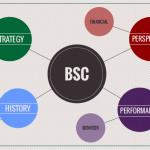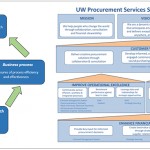The Balanced Scorecard: Outsmarting design and implementation traps
Strategy execution is not just a matter of owning adequate management tools and techniques, but also of making them work. Various organizations pride themselves on having implemented the Balanced Scorecard as their main tool for effective performance measurement and successful strategy implementation. However, is it enough to cite the use of a Balanced Scorecard in order to communicate a performance-oriented culture?
Strategy execution is difficult. Nevertheless, if all performance-oriented organizations own a Balanced Scorecard implementation system, why does the execution of strategy fail so often? Adequately configuring performance management tools so as to achieve strategy execution is frequently easier said than done.
When actually implementing Balanced Scorecards in our organization, there are a number of points that need to be investigated:
1. Strategy drafting: Successful implementation of the Balanced Scorecard depends on how well an organization has mapped its strategy. Poor articulation of strategy can lead to an ambiguous scorecard design.
Furthermore, strategic inconsistency might be unraveled as the scorecard formulation process is discharged. Consider the Strategy Map. This tool frequently helps provide a visual representation of an organization’s strategy, highlighting strategic objectives and the cause and effect argumentations, linked within the four perspectives of the Balanced Scorecard.
2. Management identity: The Balanced Scorecard is not a mechanistic tool for control-oriented management structures. It is rarely compatible with management that delivers an autocratic vision of strategy to lower levels of the organization. A top-down, bottom-up approach to strategy implementation helps avoid Balanced Scorecard implementation failures due to centralized management approaches.
3. Bureaucracy: As much as organizations like to refer to the Balanced Scorecard as a tool for standardizing performance data, its end design is based on perfectly filtered information for all the perspectives it entails: financial, customer, process, learning & growth. Therefore, data gathering extends to all levels of the organization.
Not at all easy to avoid, bureaucracy can become a blockage to scorecard creation. When not provided with the right tools for data collection, data custodians may get demotivated during the process. When used at their full potential, Microsoft Business Intelligence Tools, such as Excel, become a hands-on, problem-solving tool, as well as a technological enabler for Balanced Scorecard creation.

4. Employee perception: When deployed without the involvement of all employees within the organization, the performance scorecard becomes no more than a controlling tool.
Furthermore, it turns into just another results monitoring vexation – on top of, say, individual performance assessments of various kinds – that can easily lead to employee frustration and disengagement. When not unanimously agreed upon, the performance scorecard is deprived of all its benefits for strategy implementation.
By communicating the benefits of the balanced scorecard to all members of the organization, and by giving them the opportunity to create their own departmental and individual performance scorecards, executives are taking the first step in making sure scorecards are accepted and understood.
5. Communication without understanding: Understanding why Balanced Scorecards are important to strategy execution is, oftentimes, more than a matter of management communicating objectives. Alignment ensures that the data within the organizations’ balanced scorecard has meaning to each of its employees
Moreover, in the process of making this happen, e-mails, organization meetings, and discussions may sometimes fail to serve this purpose. And then there are also the alignment traps: increasing the number of performance indicators to track, stifling progress monitoring meetings, more performance monitoring tools, and an asphyxiating chain of command.
Ensuring that coordination in the creation and implementation of the Balanced Scorecard is an ongoing process, might just overcome issues of ineffective communication of strategy and alignment traps.
6. Lack of common vocabulary: It is not unusual that, throughout the organization, different employees have different meanings for the same concept. Lack of a common vocabulary to translate strategic elements such as Mission, Vision, Perspectives, Objectives, Goals, and Key Performance Indicators leads to amplified gaps in strategy translation, alignment, and execution.

7. Getting over the experimental Scorecard: Although they claim to have a Balanced Scorecard implementation system, the truth is that many companies do not get beyond its experimental phase. There is also a significant number of organizations that only have it implemented in one or two Head Offices where they use it on a superficial level.
Failure to act upon cohesively implementing the Balanced Scorecard throughout the entire organization means giving up at the first sight of struggle. Owning one single scorecard reflects poorly on the integrated performance management system organizations strive to achieve.
8. Standardizing Balanced Scorecard design: Management often looks for a single, generic scorecard that guarantees success. The search for the standard balanced scorecard design is ongoing. However, management should stop in its quest for performance management tools that are pre-defined and unanimously applicable.
Each organization’s scorecard must be shaped in accordance with its unique business model, as well as their industry, strategy, and organizational culture. Implementing Balanced Scorecards that others have used and thrived upon may be the downfall of those organizations that are replicating them.
9. Holding on to the past and overlooking the present: The business environment is forever changing. Consequently, it should be easily understood that elderly Balanced Scorecard implementations may not be the best practices for the organizations of today. This can be also applied to any organization that has notable experience in its operating field of the market.
Balanced Scorecards should be continuously updated. Take into consideration that some performance indicators become obsolete with time and that others should be activated instead. In the same way that the strategy of an organization adapts to new market conditions, so should we redesign the balanced scorecard around the new strategy.
10. Commitment: When implementing the Balanced Scorecard, take into consideration that it is THE performance management system, a single one, not one of many.
Decision making cannot be based on a false reality. That is why, when implemented with its full potential in mind, the Balanced Scorecard is one of the best reflections of an organization’s contribution to the real operating environment.
Effectively designing and successfully implementing the Balanced Scorecard are not processes that lack hardship. Decision factors just have to make sure that, when it comes to the Balanced Scorecard, they knowingly act upon it.
Image source:

Tags: Balanced Scorecard, Performance Management






